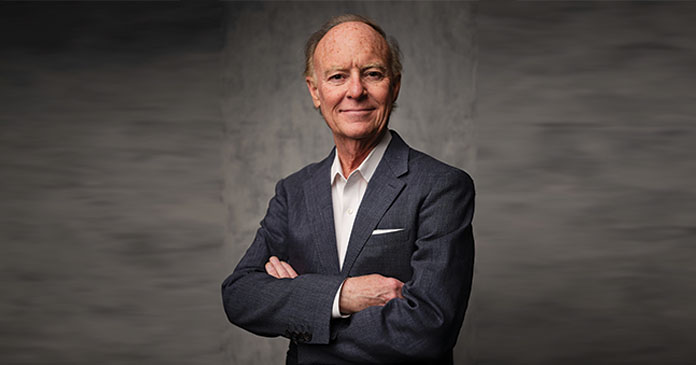The architectural community lost a giant of the industry when Mark Humphreys died last month. The founder of the nation’s largest multifamily-focused architectural firm died on January 3. He was 67.
Humphreys was a visionary who established the Dallas-headquartered architectural firm Humphreys and Partners Architects LP (HPA) in 1991, joined shortly thereafter by Greg Faulkner, with whom he had worked at a previous firm.
Humphreys’ legacy will continue under the direction of HPA president Faulkner and Walter Hughes, chief innovation
officer, who joined the firm in 1994 after obtaining his masters in architecture degree at the University of Texas, Austin.
With Humphreys at the helm, the award-winning firm designed thousands of apartments for every type of multifamily project, growing the company to include 7 offices in the U.S. and several international locations, including India and Montevideo, Uruguay.
In addition to HPA, Humphreys founded One Humphreys, HPA’s parent company, which operates HPA Design Group, HP Civil Engineering, HPLA Studio (landscape architecture), Atticus Real Estate and Glass Recycled Surfaces. They offer architectural services, interior design, landscape architecture, civil engineering, construction administration, real estate development, and recycled glass surfaces for kitchens, baths and other uses.
Humphreys also formed a luxury aircraft charter service called Piaggio Charter.
Taking flight
Inspired by his father’s career designing, testing and flying planes, Humphreys carried on the family tradition and obtained a pilot’s license like his father and brothers.
As a boy, he had two dreams for the future—becoming an architect and owning a Learjet, he said in a 2019 interview with Texas Architect magazine, realizing that to do both he would need to own a business.
Humphreys showed early talent in architectural design, entering and winning a high school design contest sponsored by a national multifamily association. He went on to enroll at the College of Architecture at Texas Tech University, funding his education by working at an engineering firm and for a multifamily architect and developer. He took business classes at the behest of a professor and began to design homes and apartments on the side, eventually hiring 12 fellow students to work with him.
After graduating with an architectural degree in 1978, he worked at companies in Lubbock and Dallas before launching HPA 13 years later.
The fledgling firm took on a variety of real estate projects before Humphreys realized that apartments was the one sector that remained strong in all economic markets, years before it was seen as an institutional quality investment.
Once investors caught on that apartments had no defaults during the Great Recession of 2007 to 2009, developers began including a larger percentage of rental housing in their mixed-use projects. “Apartments are (now) the number one investment choice of all real estate investment companies, because it’s the safest sector,” Humphreys said in 2019.
Core competence
While HPA has designed a number of mixed-use and hotel projects, under Humphreys’ leadership, multifamily became its core focus. HPA gained in market share of the sector during the recession, tapping early into government guaranteed loans.
Humphreys believed that bigger is better for profits and that a business is best run when specialists stick to their core competencies. He believed businessmen should run businesses and designers should design and that a company can never have too many marketing people, because they will always pay for themselves, said Hughes, who divides his time between HPA’s Dallas office and the office he established in Uruguay, where he was born.
“You have good designers and you have good businessmen, but Mark combined both of these qualities, and that is how he was able to create his empire. He was a visionary who saw five to 10 years ahead of everyone else,” Hughes said.
Humphreys also believed success is contingent on finding a need and filling it, even if that need is not yet widely known. When HPA renovated its Dallas headquarters, Humphreys named the conference rooms for pioneers like Bill Lear, Elon Musk and Steve Jobs, among others, who live by that tenet.
In 1995, HPA introduced the Big House design—two-story communities consisting of six- to 14-unit apartment buildings with private entries, attached garages and home-like facades, a concept both developers and city planners recognized could help overcome affluent homeowners’ NIMBY objections to multifamily development.
This design became the catalyst for a change in HPA’s business model that revolutionized multifamily architecture. “We began to create other prototypes—new products never seen before in the industry that added a lot of value for our clients by simplifying the design process and keeping costs low,” said Hughes, who, mentored by Humphreys, has overseen each new concept, including trademarked products like the E-Urban, E-Senior, E-Staks, Stak House and Home Rise.
These base designs, all property of HPA, can be modified to fit specific markets and projects, with the idea that creating a brand for the customer will keep them coming back to HPA year after year as they grow their footprints.
True American spirit
Humphreys embedded his creed into HPA’s company culture that is based on friendly internal competition, said Hughes.
“Delight your customers and create personal relationships with them. Mark would say, ‘Friends can always work out any problems that arise.’ And HPA is still doing business with clients it established relationships with more than 20 years ago,” he said.
Hughes describes Humphreys as a risk taker who embodied true American spirit. “He would say, ‘You can’t always time your jumps perfectly, but if you don’t dare to jump you will never fly,’ and he was willing to take those jumps,” said Hughes.
Humphreys married Emily Hastings in 2016 at The Pointe on 30A, a resort he built next to the turquoise waters and quartz sands of Rosemary Beach, along the Florida panhandle. He moved from Dallas to Nashville, where he purchased an 1867 Greek Revival estate located just over the Kentucky border from his wife’s family farm in Tennessee.
In 2020, he redeveloped the property into an event and lodging venue, called The Old Oaks Farm, a project he was very proud of, said Hughes. While he spent less time in the Dallas office and with the day to day operations there, he remained intimately involved in his businesses, flying into Dallas on occasion for meetings.
Humphreys also wrote a business autobiography, said Hughes, relating that shortly before he passed, Humphreys sent Hughes a text asking him to look over 11 finished chapters of the book that included headings analogizing flying and business.
“To the end, Mark was planning for the future. He called me in December and asked what I knew about the houses being offered for sale for one euro in rural hillside areas all over Italy. I told him what I knew and he suggested we each buy and renovate one, to which I half-jokingly replied, ‘Why don’t we each buy an entire hillside and redevelop the town?’ Without hesitation, Mark said, ‘Great idea! We’ll fly there in February!’ That was Mark. He lived like he was invincible, living life to the fullest, and I enjoyed seeing the world through his eyes.
“We shared a friendship that transcended work and I will miss him most for that,” said Hughes.
Humphreys was involved with numerous multifamily organizations. He was a member of the American Institute of Architects (AIA), NAHB’s Multifamily Leadership Board, NMHC’s Chairman’s Circle and Board of Directors, Urban Land Institute, ICSC, and the U.S. Green Building Council.
He volunteered at his alma mater, Texas Tech University Architecture School, and was the largest donor to the school where he funded the AIA Chair in Urban Design.
Author Wendy Broffman
















